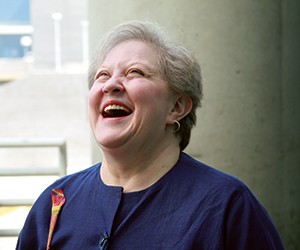When life gives you lemons, make lemonade, so the old saying goes.
When Apple, the signature sponsor of San Francisco's Macworld Conference & Expo since its inception in 1985, pulled out following the 2009 show, lesser event producers may have considered a “force-quit” on the whole model.
Not so Paul Kent, general manager of Macworld/iWorld (the event changed its name in 2012), who turned the potentially devastating departure into an opportunity to bolster the show’s core offering.
“We did a town hall meeting with longtime attendees right when it was announced,” Kent remembers. “We talked about the innovations that we wanted in order to take the show down the thematic avenues we wanted it to represent."
In the end, Kent embraced the concept that “content is king,” and after convening a town hall meeting, re-upped the event’s focus on the attendee experience.
“We had to get smarter and we had to get better, and figure out reasons as to why people would want to get up from their desk or out of their house, go across town, across the state, across the country, across the world, to come to an event,” Kent says. “It meant we had to innovate as to what an attendee experience at an event meant. Take the traditional trade show activities, product discovery and activities, and add to these experiential and social media and social media opportunities, and that was really the opportunity. We had to get better at our business, and I think we accomplished that.”
And it’s not like Macworld attendees wouldn’t notice if something was off, being some of the most dedicated, opinionated and social media-savvy attendees going, definitely unafraid to voice their concerns.
“Yes, our attendees are demanding. They always want to push the envelope. They always want to see Apple technology used in interesting ways,” Kent says, adding that Macworld was the first event to create its own show app, in 2008. “[We focus on] continued innovation, trying to stay ahead of the game and keeping in communication with our attendees and having lots of dialogue with our various constituent groups.”
Coming from a tech background—he started as a self-taught programmer who made a somewhat natural migration to the event-management world after running a consulting, training and seminar business serving high-tech customers—Kent has a unique perspective on tech trends are shaping the meetings and events industry.
“One of the most interesting is the concept of ‘geofencing,’ in which your mobile device knows where you are and what’s around your surroundings,” Kent says. “So when you walk into a conference room your mobile device will automatically pull up a presentation, check you into a session, allow you to do a survey. That, combined with social networking—the ability to continue to refine and perfect the social networking opportunities and bridge that gap between the virtual experience and the physical experience—that’s really key for our business in particular and the event business in general.”
But despite all of the high-tech bells and whistles, Kent believes the nuts and bolts of the meetings and events industry all comes down to a couple basic concepts.
“I approach this as a passionate content designer. I still think content is king, and Macworld/iWorld is a very content-rich experience,” he says.







